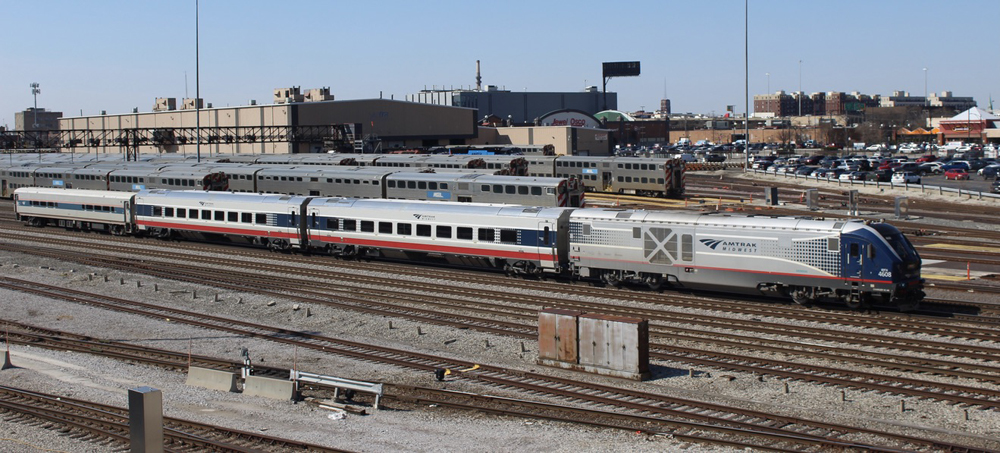
First of two parts
CHICAGO — After being delayed for several years by production setbacks and acceptance issues, the first of 17 state-owned Siemens Venture business-class cars are now hosting passengers on Midwest Amtrak routes.
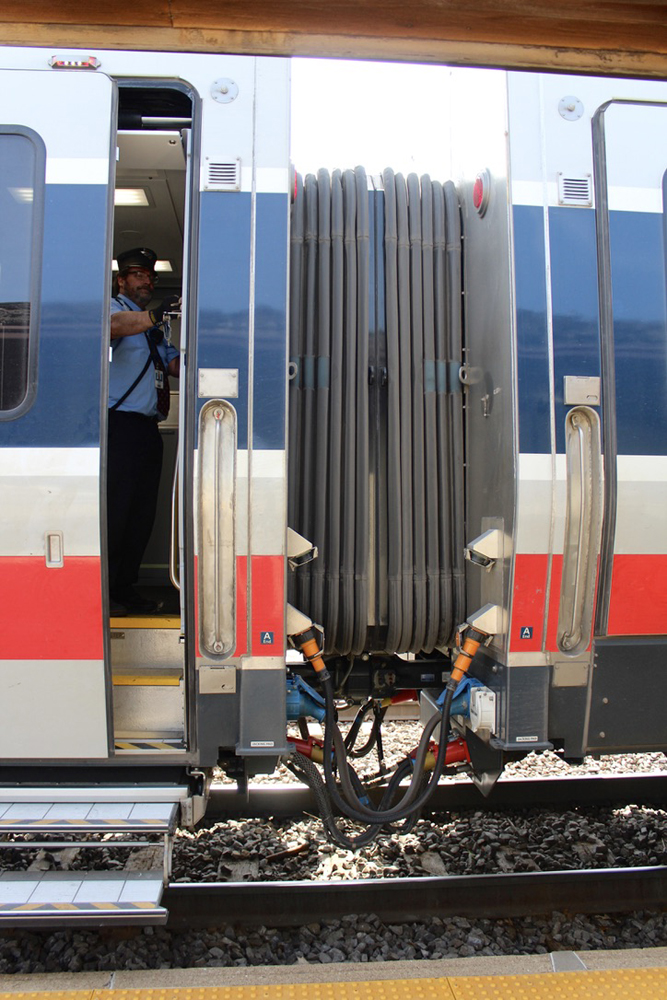
They are not being advertised, however, and you only need a regular coach ticket to ride the cars. They feature three wider seats in a two-and-one configuration in each row, rather than the four two-by-two seats in a standard coach. Premium fares are not currently required because the Venture café cars, which are intended to provide business-class beverage amenities, won’t be available for some time. And so, instead of being semi-permanently coupled to the café cars or “1B” Venture coaches, as eventually will be the case, they are currently paired only with the coaches. Keeping together these cars, with a standard coupler at one and the semi-permanent coupling at the other, ensures a seamless passage through the Ventures’ wide vestibules.
Unaware that a premium-priced fare isn’t required for the new cars, Trains News Wire demurred earlier this week when the lone conductor of Amtrak train No. 381, the Carl Sandburg for Quincy, Ill., offered business-class seating in the Horizon cafe. No thanks.
“No problem,” he said, “Just sit wherever you want.”
Wider seats are appreciated
The Venture cars made initial runs more than a year ago [see “First look: Siemens Venture coaches debut …,” News Wire, Feb. 2, 2022]. After being withdrawn intermittently to fix post-production maladies, they have pulled assignments alongside Horizons and Amfleet I coaches and cafes on most Midwest routes.
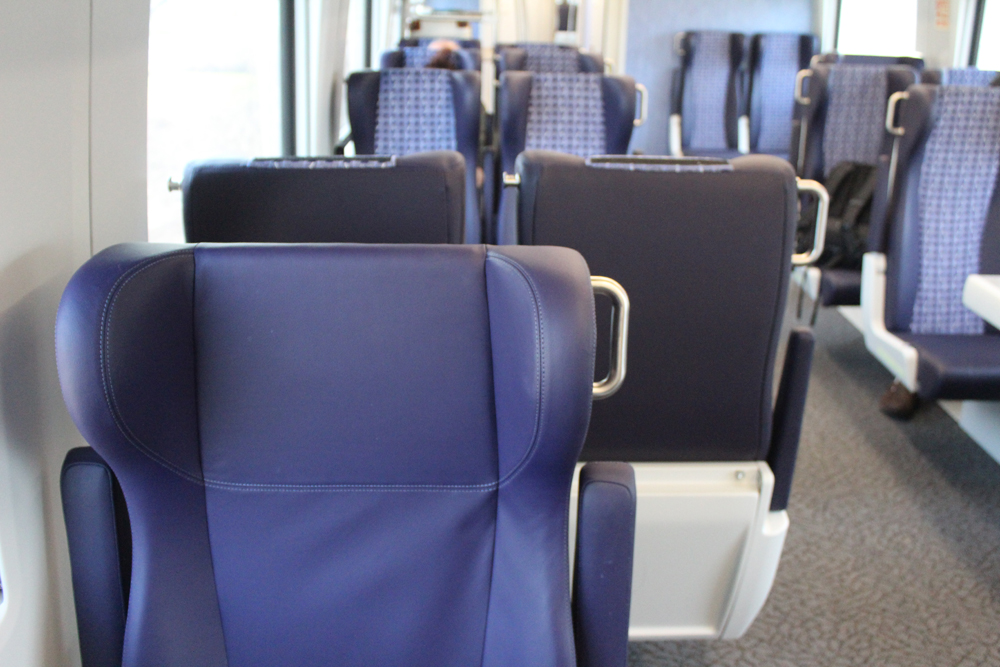
Past experience with the Venture coaches’ firm and narrow seating compared to the older equipment prompted a number of passengers, including Pat Young and Jenny Arbin, to walk through the first empty car, “to see if there was something more comfy up front,” as Arbin puts it.
Settling into a single business-class seat, Young, a professor at Macomb’s Western Illinois University, appreciates the additional cushion width and legroom, but thinks the seat seems “hard and unrelaxing and it doesn’t recline that much. It feels like a commuter car and does not give me a luxury feel. I expect comfort if I’m going a longer distance,” she adds. Finding the 110-volt socket for her laptop placed in a hard-to-reach position under the single seat’s armrest, Young soon moves to a table in the car’s coach seating section for the rest of the trip.
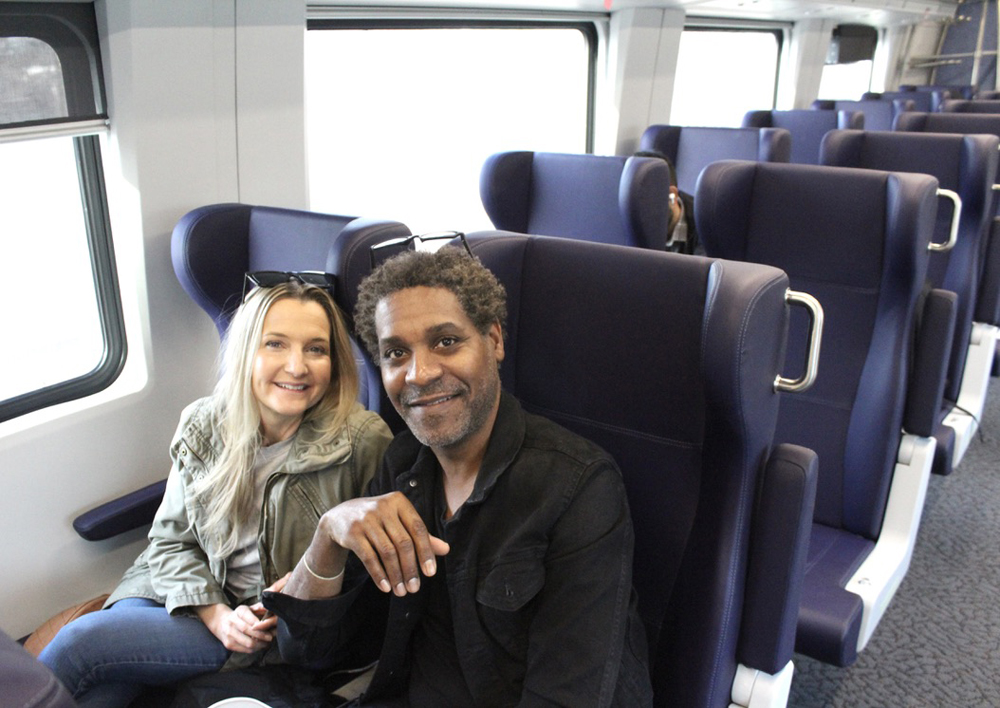
Arbin, traveling with her boyfriend to visit family in Princeton, Ill., initially has the same impression that the business class seats “are not as soft as those in the car we moved to when we took the train to New Buffalo (Mich.).” But quizzed later in the trip after looking out the big windows, getting snacks from the cafe, and relaxing in the wide seats, she admits, “This train is growing on me. We love taking Amtrak.”
Luisa Andrade, returning from Plano, Ill., to Quincy University with fellow student Isaac Bourge, thinks the business-class cars’ dual armrests are a plus. “I don’t like sharing an armrest with someone I don’t know,” she says, having experienced that on previous Venture journeys. Both Andrade and Bourge are able to find comfortable positions in their wide seats and soon fall asleep.
Other impressions
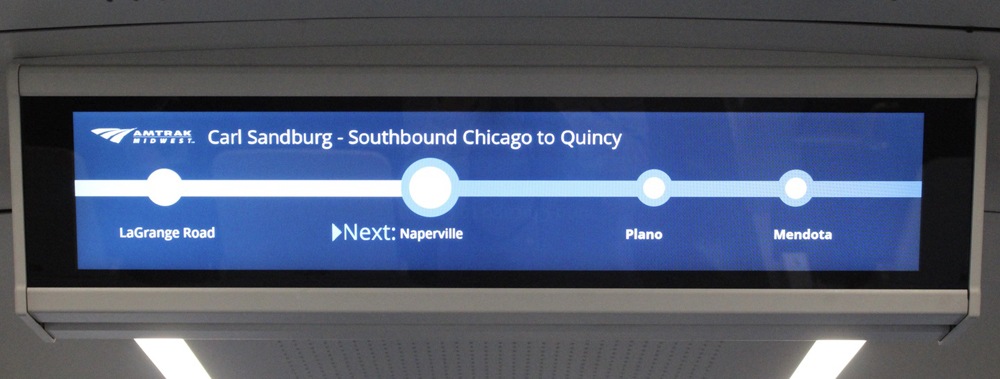
One feature delaying Venture use on specific routes was a malfunctioning information display system, which shows route and “next stop” messages while delivering pre-recorded destination advisories over the public-address system. During this trip on the Carl Sandburg to Galesburg, Ill., it performed flawlessly; the conductor was also able to make clear announcements about delays waiting for other trains, a welcome change from the subpar scratchy audio on older equipment.
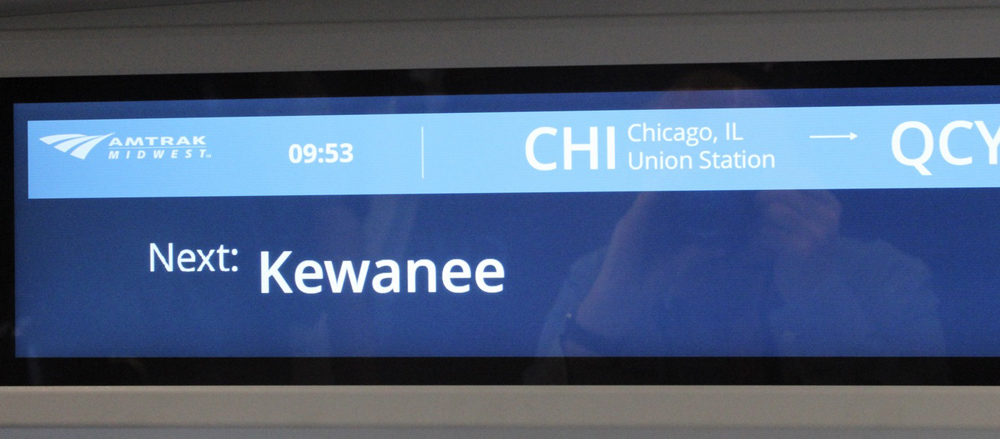
The only drawback is that the arrival time for the next station, when shown, is so small that it is extremely hard for many passengers to read. It also confusingly lists the departing station long after the train has left; arrival times are not announced.
Like the regular coaches, the Venture business class/coach ride is comparatively quiet and smooth through track crossovers and has great ventilation, good lighting, and large windows that make any trip more enjoyable. The extra-wide aisle to accommodate passengers with disabilities adds to the spacious ambience of this car, even if it contributes to the narrowness of coach seats.
Though patronage was light leaving Chicago on a Monday morning, the short train filled up substantially at the next two stations, LaGrange Road and Naperville. Those aboard cited comfort, convenience, lack of alternatives, and travel times “more than an hour faster than driving” as reasons they take the train.
— Updated at 3:20 p.m. CDT to clarify that business cars will be semi-permanently coupled to coaches, not just cafes.
Coming Friday: Part 2, an update on Venture car deployment
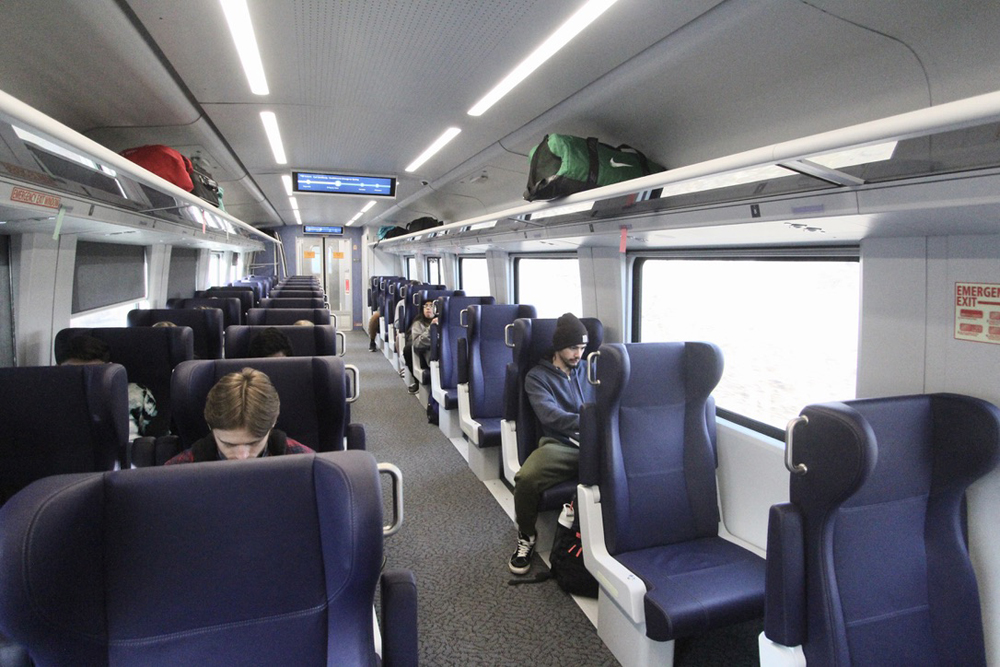







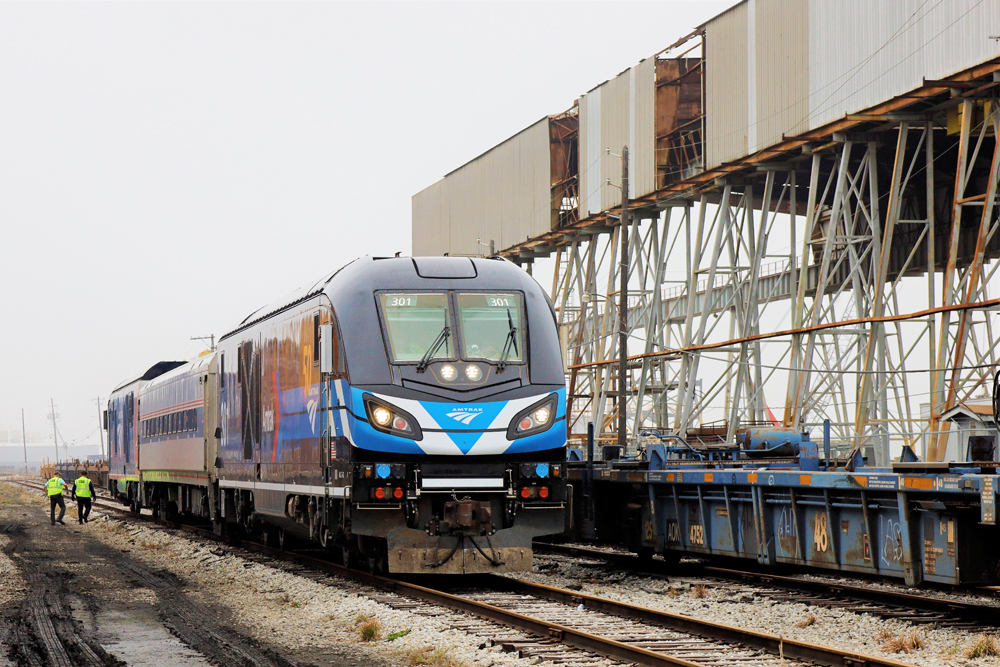

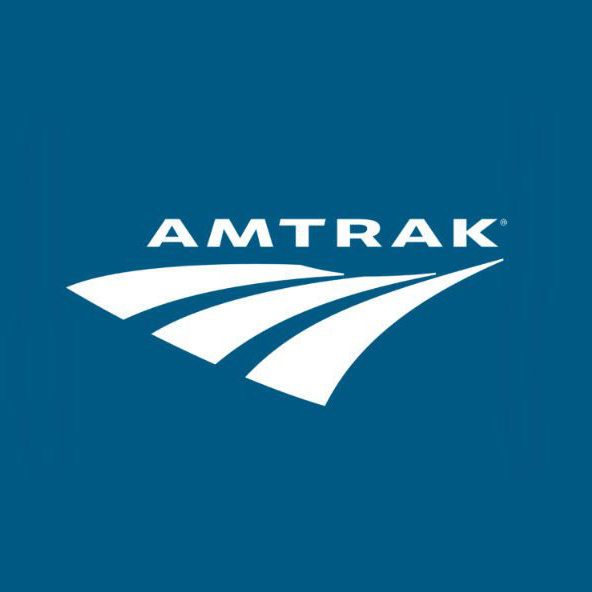




My understanding is the seats do not recline. Just the bottom slides out some. The seats look rigid and uncomfortable for a longer ride.
Bob, what identifies a coach as a “1B” model? I’m guessing “1st” batch or order of Ventures, with the “B” meaning modified to fix problems. Am I right?
I have no idea. There are similar designations–though not identical–for VIA’s Venture car types [see “VIA New Trains, New Challenges” in the March issue of Trains, page 27]
Everyone can agree we need trains to be accessible to all but if the trade off is seating that no one wants to sit in we have an issue.
Repeatedly we are told from numerous reviews of the new Venture equipment seating is uncomfortable – both in the support/comfort the seats offer and the narrowness of the seats. People avoid being uncomfortable while traveling and these seats are a major impediment to the success of any route where they are deployed.
Will the new Long Distance cars – in the name of accessibility – also be made unridable?
Will we loose bi-level trains which may people love?
Make no mistake these seats are a reason to avoid taking the train. And in classic Amtrak fashion nothing will be done to correct it.
I think the screen displays can be fixed relatively cheaply with a software upgrade. Firmness of seat is another issue but it might be because the seats are not broken in yet and are designed for long-term wear and tear……….not sure about the cost on fixing that item, depends on seat design. Midwest HSR should have caught the seat comfort issue before even ordering the cars, in my opinion.
Mr. Guenther: If you are referring to the Chicago NARP/RPA affiliate, just like the national they are nothing more than shills for Amtrak. If the top officers at Amtrak approved the seats Siemens came out with, MWHSR, d/b/a High Speed Rail Association, will not cross them. HSRA, I’m a recent newsletter, complained about the short consists the LDs have been running with. They mostly blamed Congress for not appropriating the funds for new cars. They never mentioned the hatchet job Gardner and Coscia did to their railroad in early October 2020 which included mothballing a large amount of LD equipment that was then not roadworthy in the Spring of 2021. I’ve read there are numerous Viewliner sleepers and diners sitting in storage at the Hialeah Shops, having never turned a wheel in revenue service. They were out there by put there by Richard Anderson immediately after being delivered by CAF. I sure would like documentation of that. If true, and perhaps Bob Johnson can speak to that, I want to know why NARP/RPA has never raised a stink.
Looking at the luggage racks, they appear not to have the transverse baffles to prevent luggage taking flight in a crash. These were the result on the Gunpow (Maryland) crash in 1989 +/-.
The photos suggest the seats are properly aligned with the windows. Is that the case? And what’s the situation in regular coaches?
Is it not possible to design a wider vestibule passage with standard coupling/uncoupling capabilities?
I guess it wouldn’t be compatible with other older equipment but if the entire new fleet had them then why not? Maybe a “transition vestibule” could be installed on a few end cars just in case?
And the California Venture cars are still MIA.
We’ll be addressing that in Part 2 on Friday.
Excellent. And whilst you’re at it you can address why cars that are semi-permanently coupled have installed markers.
It looks like what American Airlines passes off as domestic”first class” these days. Vinyl seats that are hard, especially on a long flight. Of course the benefits of being on a reliable, fast train far exceed an airliner. Big windows, getting out of the seat whenever you want, no seat belts or security theat,etc.
Here in the Empire Service territory it will be 7 or 8 years before new equipment shows up. Maybe the bugs will be removed and decore improved. There is always hope…
Mr Spindler, Hope is eternal!☺